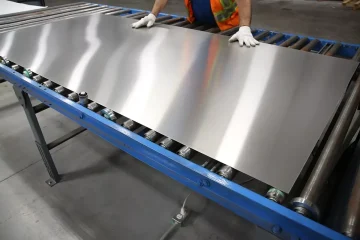Key Takeaways:
- Industrial automation is pivotal in evolving the manufacturing landscape.
- Smart factories are becoming the norm, integrating modern IoT and AI.
- There is a strong link between automation, workforce development, and safety improvements.
- Environmental sustainability is yet another significant benefit of industrial automation.
- With proper planning and investment, the challenges of automation implementation can be overcome.
- Staying informed about the future trends and directions of automation is essential for businesses.
Introduction
The manufacturing industry has always been the backbone of the global economy, underpinning the physical creation of goods we utilize daily. However, the past few decades have ushered in a new age wherein digital transformation and technological innovations are accelerating rapidly. Among these evolutions, industrial automation stands out as a revolutionary force, harnessing the power of advanced machinery, computer systems, and software to transform manufacturing processes. This blog post delves into how industrial automation optimizes production and steers the manufacturing industry toward a more efficient, safe, and sustainable future.
Understanding Industrial Automation
Industrial automation involves the integration of sophisticated technologies to operate and control various processes with minimal human intervention. This is achieved through multiple systems, including robotics, programmable logic controllers (PLCs), and complex algorithms capable of making real-time decisions. These components work in synergy to achieve superior performance in traditionally labor-intensive tasks and are prone to human error. Automation systems can adeptly handle tasks ranging from simple repetitive actions to complex problem-solving scenarios. The ultimate benefit of automation is twofold: it dramatically enhances production capabilities while reducing the potential for mistakes, leading to an overall boost in product quality and factory throughput.
The Rise of Smart Factories
Smart factories represent the pinnacle of automation and digital innovation in the modern manufacturing milieu. These factories are equipped with a network of sensors, machines, and devices, all interconnected and conversing with each other through the Industrial Internet of Things (IIoT). Such connectivity allows for the seamless data flow across the factory floor, enabling predictive maintenance, real-time monitoring, and autonomous decision-making. The interplay of IoT and AI in manufacturing lends itself to so-called ‘self-optimizing’ production lines that can adapt to changing conditions without human oversight. The expansion of intelligent factories globally is revolutionizing the industry, leading to unprecedented levels of efficiency and productivity previously unattainable.
Boosting Operational Efficiency with Automation
The power of automation to enhance operational efficiency cannot be overstated. Automated systems are designed to operate at a constant pace, unaffected by factors that typically disrupt human labor, such as fatigue or illness. This steadiness leads to a higher output rate and ensures that production targets are met and often exceeded. Beyond merely increasing the output volume, automation also refines the consistency and quality of products, as machines execute their tasks precisely each time. One specific example of such technology is the implementation of hot runners in injection molding systems. Hot runners help streamline plastic manufacturing by reducing material waste and improving cycle times, making them a crucial component in the drive for more efficient production processes. Leveraging automation, including hot runners, can also provide long-term cost savings attributed to lower overhead expenses, reduced energy consumption, and minimized material waste. This economic advantage creates a competitive edge for businesses that embrace industrial automation, allowing them to thrive in an intensely competitive global marketplace.
Industrial Automation and Workforce Development
A common misconception is that industrial automation will lead to widespread job displacement. In reality, while automation does change the types of jobs available in manufacturing, it does not necessarily decrease the total number of jobs. Instead, high-level automation requires a skilled workforce capable of managing and maintaining sophisticated machinery. This shift has created a demand for roles such as automation technicians, data analysts, and system designers. Educational initiatives and skill development programs are critical in this regard, ensuring that the current and future workforce transitions smoothly into this new era of manufacturing, where humans and machines work collaboratively. Fostering such a collaborative environment propels innovation and keeps human ingenuity at the heart of industrial production.
Safety Enhancements Through Automation
On the factory floor, safety is paramount. Industrial automation unequivocally contributes to creating safer work environments by delegating dangerous and repetitive tasks to machines. Robotic arms, autonomous vehicles, and other automation technology can take over operations in hazardous environments or handle heavy lifting, reducing the risk of injuries to human workers. The improvements are notable, with statistics showing a significant reduction in workplace accidents in factories that leverage automation technologies. Employers benefit from the decreased risk of costly accidents and their workforce’s improved morale and well-being, which operates in a safer setting.
Sustainability and Environmental Benefits
Beyond the immediate benefits to production processes, industrial automation with the help of food processing equipment in the food industry or conveyor belts in a phone manufacturing facility can contribute significantly to sustainable manufacturing processes. Automation technologies promote resource efficiency and waste minimization, directly translating to a smaller ecological footprint for manufacturing operations. Automated systems optimize energy consumption and facilitate strict control over material use, lessening environmental degradation. This focus on sustainability is becoming increasingly important as consumers and stakeholders prioritize environmentally responsible practices.
The Global Landscape of Industrial Automation
The conversation around industrial automation is not limited to any region but is of global interest and significance. While certain countries are at the forefront, pioneering advanced automation solutions and policies, others are beginning to recognize the transformative power of this technology. The differential adoption rates present challenges and opportunities as economies strive to align with the global pace. Less advanced nations can observe, learn from leading countries, and potentially adopt leapfrog strategies that may allow them to bypass intermediary technology stages and jump straight to advanced solutions that enhance their competitiveness.




